We probably all have the goal of eating more greens but sometimes it’s good to mix things up when trying to eat our 5 a day. Warrigal greens are the ultimate spinach alternative and can be a real friend in the kitchen (and for your palate).
In our ultimate Australian guide on this herb, we’ll chat about how to grow and care for this native spinach, as well as how to use it in the kitchen.
More...
Genus: | Tetragonia |
|---|---|
Species: | T. tetragonioides |
Family: | Aizoaceae |
Common Names: | Warrigal greens, Native spinach, Botany Bay greens, New Zealand spinach |
Height: | 20cm |
Plant type: | Perennial herb, annual in cold climates. |
Climate: | Cool and warm temperate, subtropical, tropical. |
Soil: | Moist and well-drained, lots of organic matter. |
Sun: | Full sun to part shade. |
Leaves: | Fleshy, oval / diamond-shaped. |
Flowers: | Small green-yellow flowers |
Maintenance level: | Low |
Poisonous to pets: | No, unless consumed in large quantities |
Introducing Warrigal Greens
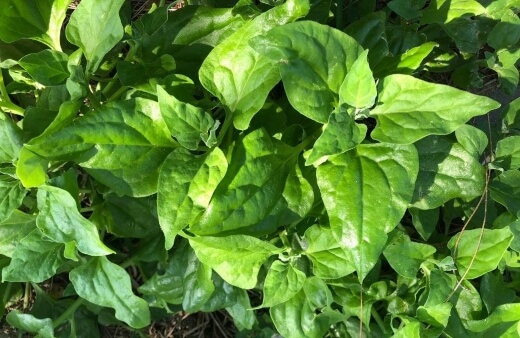
This herb is a favourite for the veggie patch. In New Zealand, they’re called New Zealand spinach, and here in Australia, you might hear them referred to as native spinach or Botany Bay spinach.
Warrigal greens are native to large parts of the Asia-Pacific region and also Chile where they grow along beaches and in dunes. These greens are hardy which makes them ideal as a leafy green ground cover for areas with sandy soils.
This plant will happily crawl across the ground but can also climb a short trellis if you give it one. In addition to being a fantastic ground cover, this plant act like a living mulch that keeps the surface of the soil cool in the heat of summer.
This plant are known for being drought resistant and heat tolerant and are grown for their succulent green leaves which can reach about 15cm in length. Most of the plant is edible so there is very little waste.
The herb apparently gets its name from its seeds. It has been said that warrigal greens are named because the seeds look like puppies’ heads and warrigal is the Wiradjuri word for dog. The botanical name of Tetragonia refers to the woody seeds that are ten-sided.
Features of New Zealand Spinach
Warrigal greens have soft stems and leaves, and the plant can reach a height of 20cm, but can spread up to 2m. The leaves are fleshy and covered with tiny hairs that give it a glow in sunlight. Small green-yellow flowers pop out at the base of the leaves in spring and summer.
Once the flowers are fertilised, they become a green pod with horn-like growths. As the seeds mature, they turn brown and the small horns dry out into sharp spikes. You can collect the seeds from the plant once they have turned brown and come off the stem when touched.
How to Grow Warrigal Greens
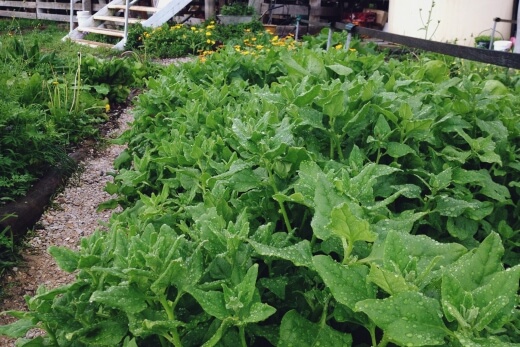
Source: milkwood.net
This plant are native to coastal areas of Southern Australia. We love it because it’s one of the easiest native food plants to grow. This herb is tolerant of wind and a variety of soil types, and can grow quickly – average size is about 2 m across and around 20 cm high.
This herb can live long in temperate areas, loves full sun and also well-drained soil. They can handle sea-spray in coastal gardens and seldom deal with disease or pests.
When planted in the garden, this ground cover will keep soil moisture levels and temperatures consistent. Warrigal greens do well under shallow rooted trees that don’t like competition, as they have a small root system.
If you live in an apartment and want to add to your balcony garden, you can plant warrigal greens in a hanging basket. Just keep an eye on it – this plant might be overly enthusiastic and spread over other smaller plants.


Get Your Free Guide:
Master Growing Australian Natives eBook
A Must Have Complete Guide for Every Australian Garden
Get Your Free Guide:
Master Growing Australian Natives eBook
A Must Have Complete Guide for Every Australian Garden
Growing Warrigal Greens from Seed
Botany bay spinach can be grown easily from seed in spring time. They grow quickly and abundantly through spring and summer. First, the small yellow flowers appear, followed by the funny looking seeds.
Let the seeds become brown and woody before collecting them for the following year. You can further dry seeds in a paper bag and then store in a dark, cool, dry cupboard until the following spring.
You’ll need to soak the seeds overnight in warm water before sowing them – they need to be 10mm deep and 50cm apart. You can also sow them in a medium to large pot or in trays indoors, to be transplanted in the garden at a later stage.

Soil temperatures of 18-35°C are best. Germination takes between one to three weeks as long as the temperature is above 25°C. Botany bay spinach like to spread out so be sure to give them enough space.
The plant should be kept moist but don’t over water it, and add mulch to preserve moisture. If you’ve prepared the soil well then you don’t need to fertilise at the start of the growing season.
You should pick the leaves frequently to encourage more growth. If you see the lower leaves turn yellow you can just remove them. Harvesting of the leaves is 50 days from sowing the seeds.
Sowing Warrigal Greens Seeds According to Climate
If your region has a temperate to warm temperate climate, you can sow seeds into trays at the start of spring, and then transplant your warrigal greens into a full sun position in the garden after the last frost.
For regions with subtropical climate, sow warrigal greens seeds into trays at the start of the last month of winter and then transplant when the last frost has passed.
Direct sowing them into a sunny position in late winter also works well if you don’t get any frost issues. Warrigal greens do struggle through hot subtropical summers if grown in full sun, but will thrive if grown in a moist, shaded spot.
If your home region climate is tropical, then Botany bay spinach are best sown in mid-autumn and grown through winter. It’s best to plant them somewhere they will be shaded through summer to maintain active growth.
How to Care for Warrigal Greens
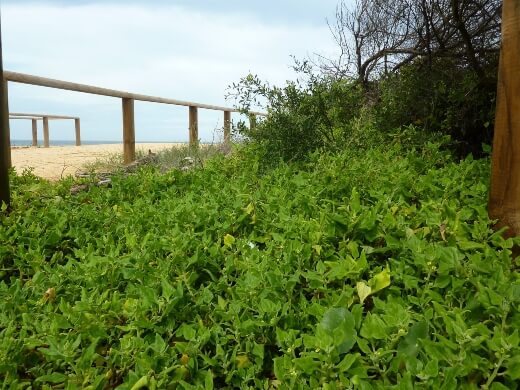
Source: gardening4kids.com.au
Sun Requirements
Botany bay spinach enjoy a dose of full sun but can also grow in part shade if you live in a region with a tropical climate.
Best Soil Type for Warrigal Greens
Warrigal greens are very hardy and can survive harsh conditions and poor soils. This herb will however bless you with large, lush greens for harvest if you show them a little love. Give this plant free-draining organic-rich soil for best results.
Watering Warrigal Greens
Although they are a drought hardy plant, warrigal greens will do better if they are regularly watered. If the plant does go through a period of little water, just give it a trim back and a good watering to stimulate new growth.
What Fertiliser to use
Warrigal greens can be fed with a top layer of compost or handful of slow release organic fertiliser halfway through the growing season. If your plant is in a container, feed it with organic based liquid fertiliser every few months to help maintain healthy production.
Having the right tools and products to care for your garden makes a big difference (and make the whole gardening experience more enjoyable). We understand the need to have honest and in-depth product and equipment reviews, so you can make the right decision.
Check out our gardening and tool categories for a bit of expert advice.
Warrigal Greens as Bush Tucker
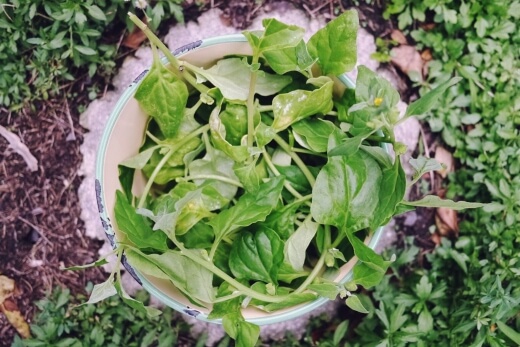
Source: milkwood.net
Warrigal greens are Australia’s very own spinach. These greens have been used as a spinach substitute since early European colonisation in Australia.
What’s interesting is that warrigal greens didn’t feature as widely in Aboriginal cooking, but are known to have been part of Maori cuisine. It’s become increasingly popular with chefs and is found on the menu of many top restaurants.
How to prepare warrigal greens
The leaves of warrigal greens contain high levels of vitamin K, vitamin C, B6, and manganese. They also contain high levels of oxalic acid and need pre-treatment before you eat them.
You can blanch the leaves in boiling water for a minute before draining and using in cooked dishes. If you are using the leaves fresh, pick young leaves at the tips of the long growth.
Soak the leaves in cold water for half an hour, drain, and you can add the leaves to mixed green salads, or maybe make a pesto.
What do warrigal greens taste like?
Warrigal greens have a fresh, grassy taste, and are slightly salty. Their leaves actually store excess salt in the tiny hairs all over them. Although these greens are comparable to spinach, they have a more complex flavour profile.
What kind of dishes can I make with warrigal greens?
You can use warrigal greens in the same way you’d use spinach, chard, and bok choy. The small yellowish flowers can be eaten too. You can make something simple and delicious with the warrigal greens, like a stir fry with a little garlic.
The fleshy leaves handle heat well, making them perfect for stir fries. It’s also delicious in soups, stews, and as a steamed vegetable. Here are some warrigal green recipes you can try.
How do you store warrigal greens? Warrigal greens can be frozen and used later. You can harvest the leaves fresh and then store them in a ziplock bag in the freezer. When you’re ready to use them, remove from the freezer and blanch them, before whipping up your favourite recipe.
If you’re looking for more inspiration for your garden and kitchen, our Australian Bush Tucker articles have great info on how to identify, gather and use native plants, fruits and trees for eating and for medicine.
For more bush tuckers, see our growing guides below:
Warrigal Greens FAQs

Why do my warrigal greens look like they’re dying?
Warrigal greens like warm weather and sometimes die back naturally in winter. The good news is they should re-seed in spring. If you’re aiming for a year-round supply of native spinach, you can try growing this plant in a warm spot indoors.
Do warrigal greens have a lot of pests and diseases?
In the world of leafy vegetables, you’re always going to be dealing with slugs, snails and caterpillars but this herb species doesn’t usually struggle with pest infestations due to their salt content. There are also no major diseases that affect warrigal greens.
If other plants in your garden are fighting off some unwanted pests, maybe you’re trying to figure out which kind of pest control is best. We’ve put together a guide to point you in the right direction and demystify the world of annoying creepy crawlies.
What happens if I have too many warrigal greens in my garden?
This herb can grow so abundantly that sometimes it starts to feel like a weed but you can use any excess for the benefit of your garden. Warrigal greens break down quickly and can be added to your compost or worm farm. They are a nutrient-rich fertiliser for your other plants.
Do warrigal greens have any benefits?
Warrigal greens are water-wise and grow much easier than spinach. The leaves can be used in herbal medicine remedies as an anti-inflammatory, to treat gastrointestinal diseases.
They can also help with weight loss and management. Warrigal greens are high in fibre, can be used as a sedative, and even in the prevention of ulcers.
Do warrigal greens feature in any interesting history?
Captain Cook encouraged his men to eat warrigal greens as a way to fight scurvy, and many people owed their lives to this spinach-like plant. Warrigal greens were taken back to England by the botanist Joseph Banks in 1771, making them the first Australian food plant to be cultivated abroad.
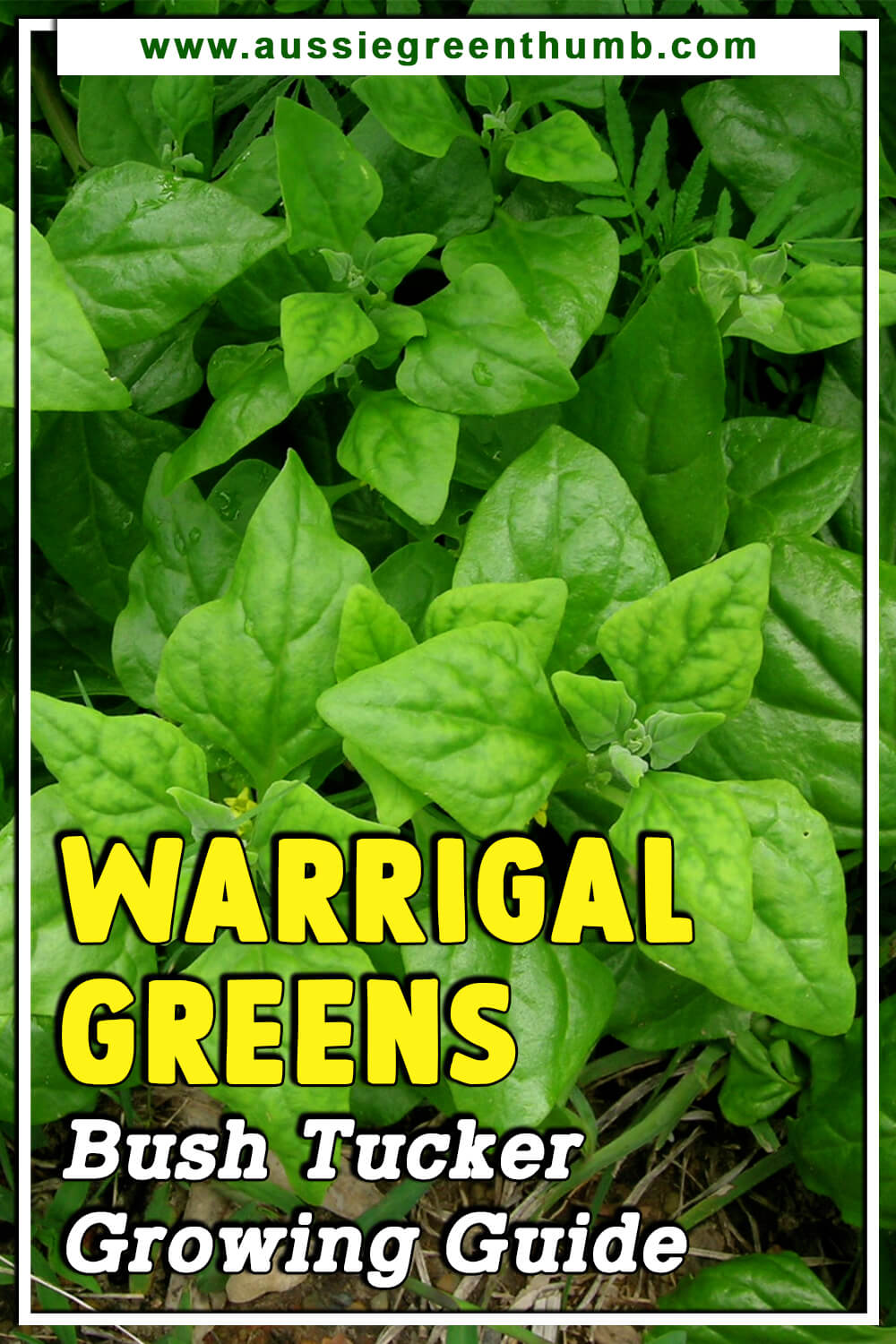
Enjoy the Benefits of Growing Warrigal Greens in Your Garden
Stir fried or steamed, warrigal greens are packed full of green goodness. The kids might need a little more convincing, but this lush herb is useful in the garden, and in the kitchen. Warrigal greens can grow and spread happily and rapidly, so you get maximum return on your native spinach investment.
Move over slugs and caterpillars, these warrigal greens are for human consumption. With a fresh grassy flavour, you’ll be inspired to cook many Asian dishes and you might even find yourself munching away on new young leaves as a snack.
If you need to dose up on antioxidants, get growing, harvesting and cooking some warrigal greens. Helpful and healthy, we’re giving warrigal greens our thumbs up!
Published on April 15, 2022 by Lorri Hopkins
Last Updated on October 4, 2025




